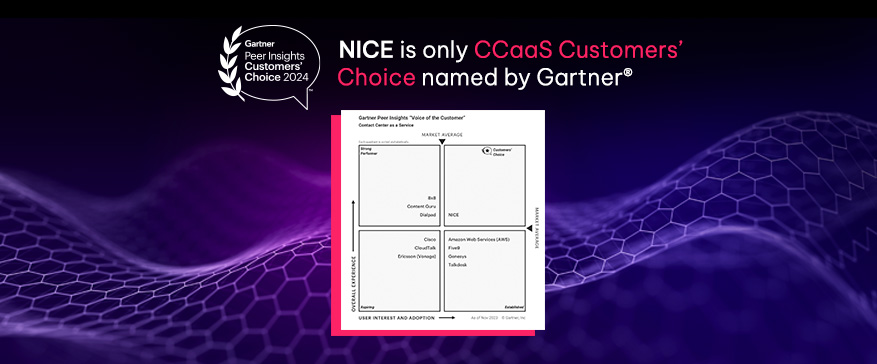- Anytime, anywhere
While on-prem may use physical access to hardware, with cloud recording, the recordings of customer interactions are stored on remote servers maintained by the cloud service provider. This means that users can access the recordings from anywhere via an internet connection using a web browser or a dedicated app. This can be particularly useful for contact centers with multiple locations or teams, as it enables users to easily collaborate and share information without the dependency on physical access to hardware or data centers.
For example, a contact center supervisor who is working remotely can access call recordings and monitor the performance of their agents in real-time without needing to be physically present in the contact center. Similarly, agents can access their own call recordings or transcripts from home or on-the-go without needing to be in the office. This can improve productivity, collaboration, and efficiency across the organization.
- Up & down
Cloud recording, unlike on-prem, can be easily scaled up or down depending on the organization’s requirements, without having to purchase additional hardware. This can save time, costs, and make it easier to adapt to changing business needs. It also offers more infrastructure flexibility in terms of scalability compared to on-prem recording. With cloud recording, the amount of storage space and processing power can be increased or decreased on demand based on the organization’s requirements. Organizations can easily scale their recording up or down, without having to purchase additional hardware or invest in costly upgrades.
For example, during peak call volume periods a contact center can quickly increase its recording capacity to ensure that all customer interactions are captured without any degradation in quality and service. Similarly, during slower periods, the organization can scale back its recording capacity to avoid unnecessary costs.
- Safe & sound
Security is a crucial consideration for any contact center when it comes to recording and storing customer interactions. While on-prem recording can offer some level of control over data security, it can also require significant investment in security measures and ongoing maintenance to ensure data remains safe. Cloud recording on the other hand, offers several advantages when it comes to data security. Cloud recording providers typically invest heavily in security measures to protect their customers’ data, including encryption, firewalls, and access controls. These providers have teams of security experts dedicated to monitoring and updating security measures to ensure that they stay ahead of the latest threats and can offer an SLA. In addition, cloud recording providers typically have multiple data centers and redundant backup systems in place to ensure data is always available, even in the event of a disaster. This can provide better protection than many organizations achieve with on-prem recording, which may rely on a single data center or backup system.
However, it’s important to choose a reputable cloud recording provider and to ensure that data is properly secured and backed up. Organizations should carefully evaluate potential providers to ensure that they meet their specific security requirements and that they have appropriate certifications and compliance standards in place. Organizations should also consider factors such as data ownership, access controls, and data retention policies when evaluating cloud recording providers.
- Plays nice with others
Cloud-based recording offers the advantage of being easily integrated with other cloud-based tools, such as analytics or quality management solutions, which can provide a more comprehensive and holistic view of customer interactions. Cloud-based recording solutions often have open APIs that allow for seamless integration with other tools, enabling users to leverage the benefits of multiple technologies to gain deeper insights into customer interactions and drive better business outcomes.
For example, by integrating cloud-based recording with a quality management solution, contact center managers can evaluate agent performance and identify areas for improvement. By listening to call recordings, managers can evaluate communication skills, identify knowledge gaps, and provide targeted coaching to improve agent performance. Under a single vendor, automation may be leveraged to offer greater efficiencies
- Effortless management
Cloud systems are typically updated automatically by the provider. This means that organizations do not have to worry about installing and maintaining upgrades themselves, which can save time and skilled resources. Also, automatic updates ensure that organizations always have access to the latest features and security enhancements. Cloud recording providers continuously update their solutions to improve performance, add new features, and address security vulnerabilities. By taking care of upgrades automatically, providers ensure that organizations are always using the most up-to-date and secure recording solution.









